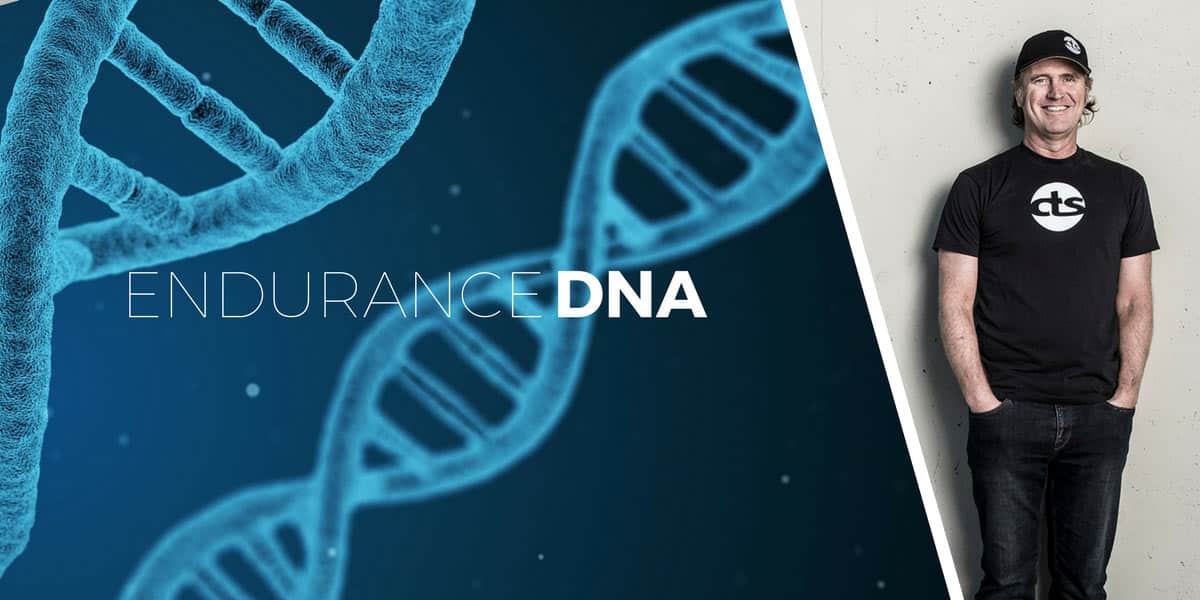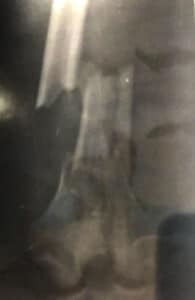
Should Your DNA Change The Way You Train?
I’ve always been fascinated by the role of genetics in sport. Obviously, there’s the heredity aspect that sometimes helps children of great athletes become great athletes themselves. More practically for those who don’t win the DNA lottery, genes affect the way individuals respond to stimuli, potentially opening the door to even greater customization of training, nutrition, and recovery interventions. The use of genetic insights in sports is currently, and will continue to be, a hotly debated topic among coaches and sport scientists. To get first-hand experience with it, I sent a saliva sample to Helix to see what insights I could glean from my own genetic profile.
The Endurance DNA product CTS created in partnership with Helix currently provides insights on 20 genetic variants thought to affect endurance athletic performance. The process is pretty simple. You get a sample kit in the mail, provide a saliva sample, and mail the package back. You then receive an email informing you that your profile is available, and you log in to your account to view your results.
I’m not going to go through all 20 of the insights from my profile, but there were a few big takeaways from my data:
Osteoarthritis: Higher Risk

X-ray of my broken femur. My knee is at the bottom and you can see the split between the two femoral condyles.
According to my genetic profile, I am predisposed to a higher risk of developing osteoarthritis. While once thought to be primarily the result of wear and tear, a more updated view is that it’s a degenerative disorder affecting cartilage, and excessive use or trauma can accelerate or exacerbate it. On the flip side, there’s the notion that regular exercise improves joint health by keeping lubricating synovial fluid circulating in the joint capsule.
In my case, I suffered significant trauma to the bones and cartilage in my knee when I broke my femur. I split the femoral condyles, ended up with a one-inch shorter leg, and subsequently had multiple knee surgeries. Thirty years later and after tens of thousands of miles on the bike, even that damaged knee does not show signs of osteoarthritis. If anything, the results of my genetic profile affirm my belief that regular exercise and thoroughly rehabbing injuries are essential components of maintaining healthy joints.
Bone Density: Higher
For those people who think I’m hard-headed, you might be right! I am genetically predisposed to have higher bone density, and despite a lifetime of predominantly non-weight bearing exercise, tests show my bones are okay. My bone density is slightly below average but still comparable to the overall average for men my age.
There is some evidence longtime cyclists, especially those who chronically restrict energy intake to maintain a low bodyweight, may be at increased risk for low bone density and increased risk for fractures. I was that athlete for about 15 years, including my late teens and early twenties when I was still reaching peak bone density. I have broken plenty of bones during my life, but only from very traumatic accidents. I’d like to think that the combination of a varied diet containing enough calcium, a genetic predisposition to high bone density, and incorporating strength training after turning 40 has helped me get this far with healthy and sturdy bones.
Electrolytes: Typical Sodium and Low Magnesium
Muscle cramps were once thought to be caused primarily from electrolyte imbalances, but we now know electrolyte levels in the blood is just one of several factors that contribute to cramping, or may not influence cramping at all. I’ve always had a problem with muscle cramps during very long and very hot rides, which is when there is definitely a bigger overall stress on the body as a combination of muscular fatigue, dehydration, and low electrolyte levels.
My genetic predispositions for typical sodium and low magnesium levels in the blood is not indicative of a major problem, but it does provide some context to why I might be more vulnerable to cramps than others. Though I sometimes consume saltier foods and incorporate electrolyte-rich sports drinks into my nutrition strategy for long training rides and ultraendurance events, knowing my genetic predisposition encourages me to use an electrolyte-rich strategy more consistently.
► Free Cycling Training Assessment Quiz
Take our free 2-minute quiz to discover how effective your training is and get recommendations for how you can improve.
No Huge Red Flags
Perhaps the best thing about my genetic profile is what it doesn’t say. We incorporated an ‘Insights Dashboard” into Endurance DNA because it’s important to take a step back and look at the broad overview of your genetic profile. Individual insights are important, but what does the constellation of insights infer about your overall risks or opportunities?
Applying and tailoring the recommendations to an individual’s training and goals is why we incorporated a CTS Coaching Consultation into Endurance DNA. In my case, my profile includes a relatively low number of areas where my genetics put me at increased risk for injury, nutrient deficiency, or hindered endurance performance. Similarly, it doesn’t infer that I’m an outlier with the potential for superhuman performance and perfect health.
The results are realistic and – notably – don’t contain any insights wildly contrary to my personal experience. For instance, in the multivariate insight that compares your genetic markers to a database of elite athletes, I didn’t rank all that high compared to the best endurance athletes. Even though I was a pro cyclist, I felt that was true. When I got really light I was pretty good, but even then it was on the 3-5 minute climbs, maybe the 10 minute ones. On the long climbs on big mountain stages I always felt like my engine was two cylinders short compared to the best.
Would Genetic Information Change The Way I Coach?
This is the big question, and a big part of the reason I wanted to experience getting my own profile. The results of a genetic test do not change the fundamental building blocks or principles of endurance training. If I were coaching an athlete with my exact genetic results who was training as an endurance cyclist, I’d keep the fundamentals of their annual plan the same. I would use the genetic profile as a guide and try to find ways to test whether we could take advantage of genetic predispositions that could improve performance and perhaps prevent injury. The profile would also alert me to areas I should keep an eye on because they might be vulnerabilities.
In my view, genetic testing adds another layer of data we can use to generate a more complete picture of an athlete. We already have data from power meters, heart rate monitors, wearable sensors, lactate threshold and VO2 max tests, and many more. One of the values of genetic information is that it’s a leading indicator, providing information on what to look out for or what opportunities you might want to pursue. This is in contrast to information from power meters and wearable sensors are lagging indicators. Each piece of data is important on its own, but it’s more important as a part of that complete athlete profile. After all, we coach the whole athlete and the whole person, not just individual performance markers.
► FREE Mini-Course: Learn How to Maximize Your Limited Training Time
Learn step-by-step how to overcome limited training time and get faster. Walk away with a personalized plan to increase your performance.
"*" indicates required fields


Comments 4
I am not a scientist, at least not in this arena, but common sense and limited experience tells me that very few things in the human body have simple, direct, one to one relationships. Genes are one of the more complex, systems in the human body, and nearly everything I have read about genes suggests that there are multiple genetic factors for nearly every human physical trait. I can see no reason to consider genetics for training, beyond what body type tendencies we as individuals have. Ectomorphs will likely be better climbers, endomorphs, might succeed better as track sprinters, and mesomorphs can likely go whichever direction they choose. Beyond those simple types of observations, we are just no there yet with being able to use genetic information for training.
Also I’m not sure that this test includes the the gene responsible for the will to succeed, which is probably the one of biggest determining factors of success. Also self fulfilling prophecy can be a dangerous tool. Perhaps it’s best not to know and to forge ahead with a mental fortitude.
Additional thoughts: More recent science into Epigenetics does reveal that while you may have a genetic propensity for certain diseases such as osteoarthritis, what you eat and how you think influences those genetics thru associated genes that act like switches turning on or off genetic influences to develop and disorder or acquire an attribute.
Dietary influences from sugar and gluten and stress will promote diseases such as osteoarthritis, and a majority of other diseases (or the reverse any genetic influence with alternative choices). I remember another endurance coach, (can’t think of his name, Friel I think) had put his athletes on a Paleo type of diet-no processed foods. All the athletes improved in performance. So not just genetics, but also genetic influences affect performance from lifestyle choices.
Although genetics has made it into clinical care for cancer and pharmacogenetics in a limited way, we are still pretty far away from using genetic insights for most complex traits, like athletic performance. For example, as part of a very large international consortium that studied over 33,00 people and found 56 genes that affect bone density*. Despite data indicating that over 60% of the difference in bone density between people is due to genetics, the 56 genes that we found only account for a small percentage of the difference in bone density between people. On a positive note, we did identify targets for development of drugs to treat osteoporosis.
The bottom line is that I doubt that information on 20 gene variants is going to be very useful in constructing a training plan.
*Estrada K, et al Genome-wide meta-analysis identifies 56 bone mineral density loci and reveals 14 loci associated with risk of fracture. Nat Genet. 2012 Apr 15;44(5):491-501. doi: 10.1038/ng.2249. PMID: 22504420